
AChilders
-
Posts
48 -
Joined
-
Last visited
Content Type
Profiles
Blogs
Forums
American Weather
Media Demo
Store
Gallery
Posts posted by AChilders
-
-
18 minutes ago, Roger Smith said:
Just starting to cross the warmer core of Gulf stream, I would say Nicole reaches at least low end cat-2 at some point tonight, possibly mid-range cat-2, and also performs more of a curve north than model consensus, earlier was asking people what they thought of a grazing coastal track, possibly some inland movement now probable, but I think Nicole will try to stay over warm water as long as it can, could mean a landfall Jupiter to Melbourne. Never all that far inland, heads up NNW with enough of circulation over water to retain cat-1 intensity for quite a while, strong TS near Georgia coast in 36-42h. Long duration fetch means storm surge issues must be taken very seriously. This is now almost as strong as Sandy approaching NJ and Staten Island comes to mind. Were not the storm surge forecasts lowballed there? Or did people not take accurate warnings seriously? One or other as I recall.
While this isn't close to Sandy in size or strength, I do think with the duration and size of the wind field that the surge is being under forecasted. There could definitely be areas that see 6-8' of storm surge.
-
 1
1
-
-
Has anyone calculated the IKE for Nicole?
-
3 minutes ago, Ed, snow and hurricane fan said:
HWRF has landfall near the Space Coast as a 963 mb tropical storm.
How large is the TS wind field at that point?
-
I think due to the size of the wind field that the storm surge in NE FL is being underestimated, 4 days of fetch coming onshore through multiple tide cycles during a "Beaver Tide" will push more water up the St Johns than anticipated, I feel it will be as high or higher than Irma in 2017.
-
-
991 Landfall at around Hobe Sound
-
-
833 WTNT42 KNHC 071458 TCDAT2 Subtropical Storm Nicole Discussion Number 2 NWS National Hurricane Center Miami FL AL172022 1100 AM AST Mon Nov 07 2022 The structure of Nicole this morning remains distinctly subtropical, as the low-level circulation remains tangled up with an elongated upper-level low. The wind-field also remains quite broad, with data from the NOAA-P3 Hurricane Hunters this morning showing the highest winds remaining displaced well away from the center. The initial intensity is being held at 40 kt for this advisory which is supported by the subtropical classification of ST2.5/35-40 kt from TAFB, the earlier scatterometer data, and recent SFMR winds from the NOAA-P3 aircraft in the 40-kt range. Nicole might be starting to take a northwestward turn this morning, with the estimated motion at 320/8 kt. A continued northwestward motion is expected through the day, though there might be some wobbles more north or west here and there as the low-level circulation continues to interact with the decaying upper-level low. After 24 hours, an anomalously strong mid-level ridge is expected to amplify over the southeastern U.S. which is expected to steer Nicole and result in the system turning westward or even west-southwestward on Tuesday night into Wednesday. This ridging will then re-position itself to the northeast of Nicole by Thursday and Friday which is expected to allow the cyclone to begin gaining latitude after it moves across the Florida Peninsula, though how quickly this occurs is a source of track uncertainty in this time frame. Finally a broad mid-latitude trough is forecast to eject out of the Rockies into the Great Lakes region, further eroding the ridge and allowing Nicole to recurve by the end of the forecast period. The track guidance is fairly tightly clustered for the first 60 hours of the forecast, though it has taken a noticeable shift southward this cycle, and the NHC track forecast was shifted a bit southward due to this adjustment, but still is a bit north of the HFIP Corrected Consensus Approach (HCCA). Intensity wise, Nicole may take some time to consolidate given its large radius of maximum winds and currently meager central convection due to nearby dry air related to the nearby upper-level low. This feature should gradually decay and warm 27-28 C sea-surface temperatures should enable more organized convection to develop while the system remains in a low vertical wind shear environment. Nicole is forecast to transition to a tropical storm sometime in the 24-36 hour period as this convection helps to contract the radius of maximum wind, with further intensification expected thereafter. The intensity guidance was a bit higher this cycle, and the latest forecast now takes Nicole to a 65-kt hurricane in 60 hours, which is close to the latest HCCA, HMON, and SHIPS guidance. After Nicole moves inland, weakening is anticipated, and the region that Nicole is forecast to emerge off in the northern Gulf of Mexico has cooler SSTs that likely would not support robust reintensification. Regardless on the ultimate intensity of Nicole, the storm's large size due to an enhanced pressure gradient north of the storm will likely cause significant wind, storm surge, and rainfall impacts over a large portion of the northwestern Bahamas, Florida, and the southeastern coast of the United States during much of the upcoming week. Key Messages: 1. Hurricane conditions are possible across portions of the northwestern Bahamas and southeast to east-central Florida beginning Wednesday, where a Hurricane Watch has been issued. Tropical storm conditions are possible in the Tropical Storm Watch areas in Florida and Georgia beginning Wednesday. 2. A dangerous storm surge is possible across portions of the northwestern Bahamas, much of the east coast of Florida and portions of coastal Georgia. A Storm Surge Watch has been issued for most of the east coast of Florida and portions of coastal Georgia. 3. Do not focus on the exact track of Nicole since it is expected to be a large storm with hazards extending well to the north of the center, and outside of the cone, and affect much of the Florida peninsula and portions of the southeast U.S. 4. Nicole will produce heavy rainfall by Wednesday night and Thursday across the Florida Peninsula. Flash and urban flooding will be possible across portions of the Florida Peninsula along with river rises on portions of the St. Johns River. FORECAST POSITIONS AND MAX WINDS INIT 07/1500Z 26.2N 69.4W 40 KT 45 MPH...SUBTROPICAL STORM 12H 08/0000Z 27.0N 70.5W 40 KT 45 MPH...SUBTROPICAL STORM 24H 08/1200Z 27.7N 71.9W 45 KT 50 MPH...SUBTROPICAL STORM 36H 09/0000Z 27.6N 74.1W 55 KT 65 MPH...TROPICAL STORM 48H 09/1200Z 26.9N 76.5W 60 KT 70 MPH 60H 10/0000Z 26.6N 78.7W 65 KT 75 MPH 72H 10/1200Z 27.3N 81.2W 50 KT 60 MPH 96H 11/1200Z 29.4N 83.9W 45 KT 50 MPH 120H 12/1200Z 33.3N 79.0W 45 KT 50 MPH...INLAND $$ Forecaster Papin/Brown
-
NHC now predicting this to attain hurricane status
-
Average intensity seems down this morning across models, but also further south approach and swing into the gulf seem to be very plausible
-
 1
1
-
-
-
11 hours ago, Floydbuster said:
Three runs in a row of the GFS model showing a monster hurricane near Puerto Rico first week of November, similar to Lenny 1999.
Make that 4 runs in a row
-
 1
1
-
-
3 hours ago, Ed, snow and hurricane fan said:
After Allison 2001, FEMA was in my neighborhood (came to my house) and others, following the freshwater floods, and FEMA and Federal Flood Insurance offered some people money in lieu of further insurance, that is, they would not re-insure people who flooded many times before. They cleared entire subdivisions near the bayous, and I think they did the same in 2017. Saltwater flooding, if the risk is that high, FEMA and Federal Flood Insurance should buy the property and leave it undeveloped. Taxpayers shouldn't subsidize building in disaster prone areas.
Its the price you pay to live in paradise, people will not give up ocean front views (or gulf front), even if they do, real estate vultures will come in and buy it all.
-
 2
2
-
-
1 hour ago, Whineminster said:
How was that, sad? Place is just gone.
It honestly gets a little worse every day right now, traffic is obscene getting on and off Estero Island. Typically takes 3 hours to go 15 miles from Fort Myers city to FMB and 2 hours to get back off the island, debris piles are high and until they are somehow able to open the east end bridge towards Bonita Beach, it will stay that way. I was there again yesterday.
-
 1
1
-
-
17 hours ago, Amped said:
I spoke with he and Jeff Evans yesterday at a property in Fort Myers Beach.
-
4 minutes ago, jm1220 said:
The slow movement might increase the impact of the winds but the fact so much property is a few feet above sea level is what’s going to be really devastating in these places. Entire towns are literally built around canals in these places, and they’ll be under 15 feet of water.
Nothing but canals and houses.
-
 2
2
-
-
2 minutes ago, jm1220 said:
The slow movement might increase the impact of the winds but the fact so much property is a few feet above sea level is what’s going to be really devastating in these places. Entire towns are literally built around canals in these places, and they’ll be under 15 feet of water.
Cape Coral was designed this way, it is 3 feet above sea level.
-
 1
1
-
-
-
-
36 minutes ago, MattPetrulli said:
That area between Sarasota and Cape Coral is a little more rural compared to the big west coast cities. Charley went that way and as we know damage was a little more limited because of that (still very costly). However, I think the wind field will be a lot bigger than Charley even though this won't come in as a 150 MPH hurricane. The lack of a big wind field led to a minimal surge with Charley (I believe around 6 feet which is crazy low for a category 4). The size of Charley was about the same as Ian is now,(according to 1 PM advisory August 13, 2004). So assuming the models are correct, the wind field SHOULD grow a lot more. That wind field can lead to really bad storm surge problems in Cape Coral and Ft Myers, which would be a difference vs Charley. So besides the hopeful Tampa miss to the west and the weakening solutions with tropical storm conditions etc, I think a potential best case scenario MAY be a landfall between those 2 cities, but either solution would be really bad. I could be a little ignorant to some aspects, so just from what I have gathered. Of course, others free to chip in.
Charley was a small diameter storm, 5 mile wide eye with a forward speed of 26 MPH, this isn't Charley,
-
 1
1
-
-
-
Pressure dropping on Euro at 144, high locked above, looks like its going for the 1-2 punch.
-
Has anyone else ever read over this before?
http://gtbacp.com/presentations/Project_Phoenix_Scenario_Info.pdf
-
 1
1
-
-

.thumb.png.2009958a205e2c50e92e8f2390a110ea.png)
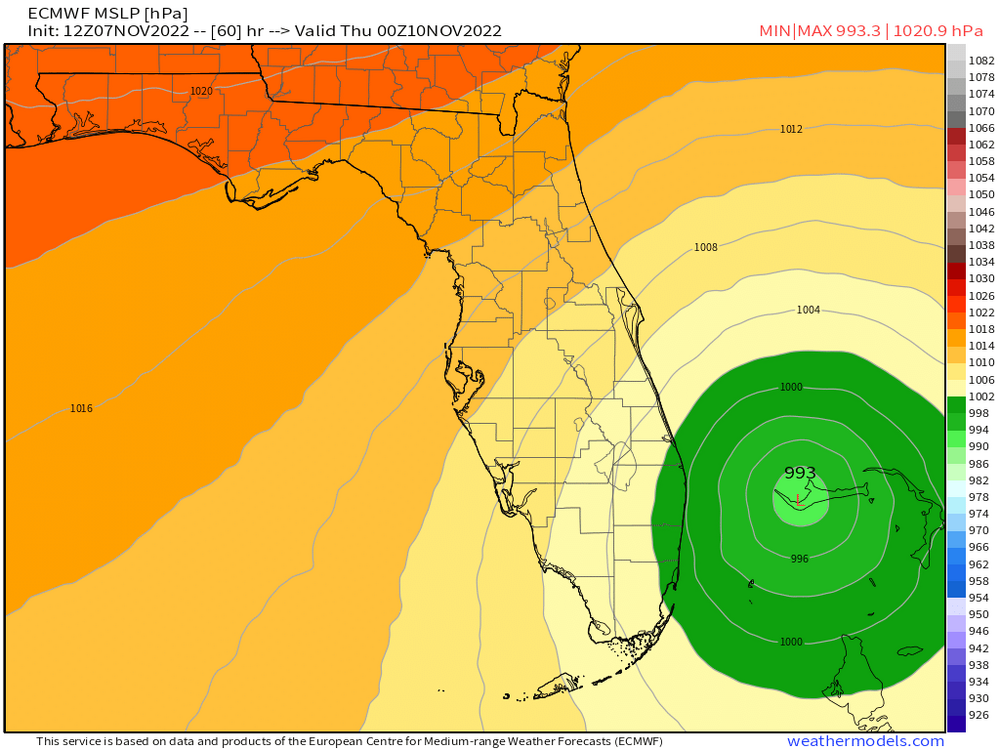
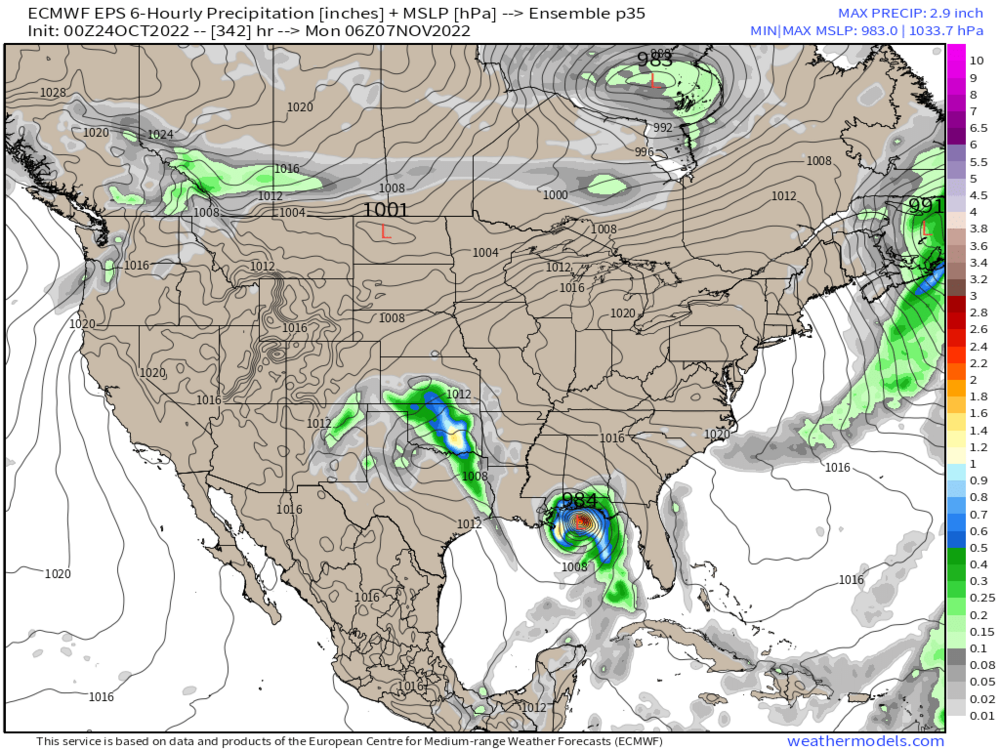
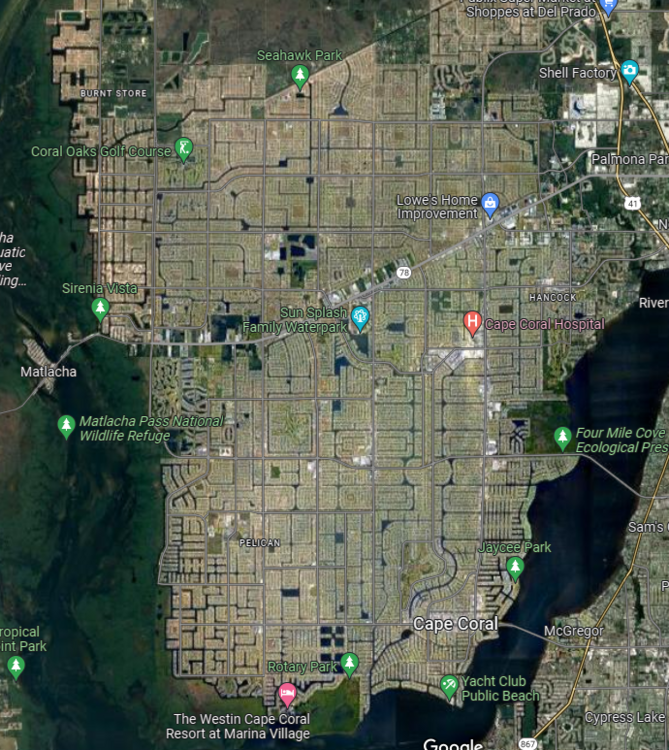
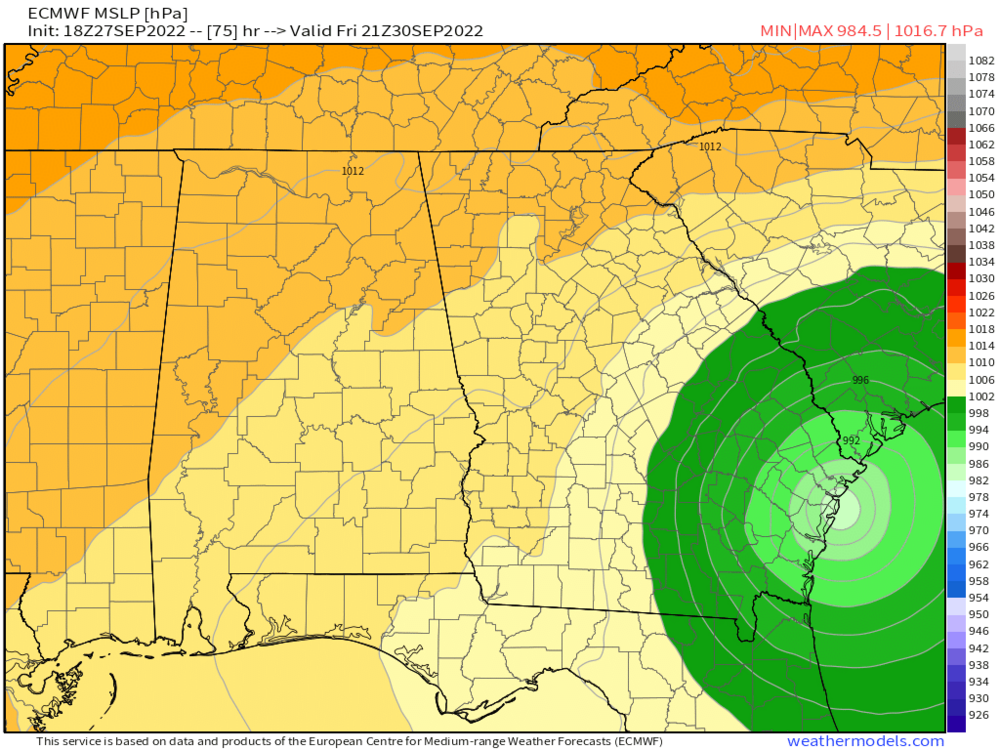
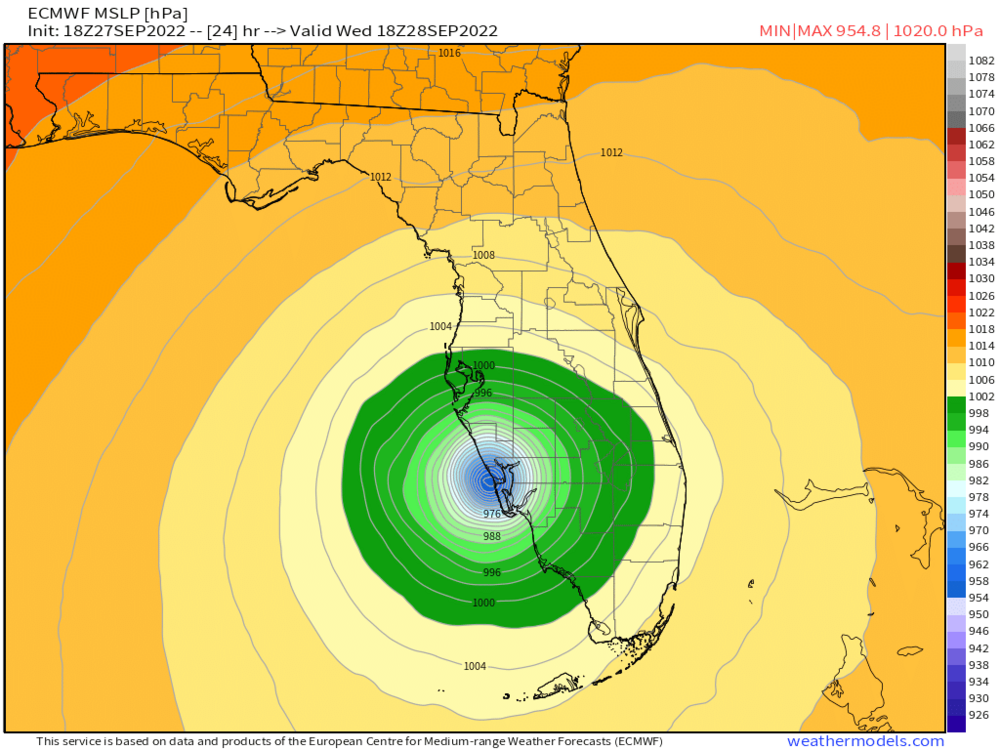

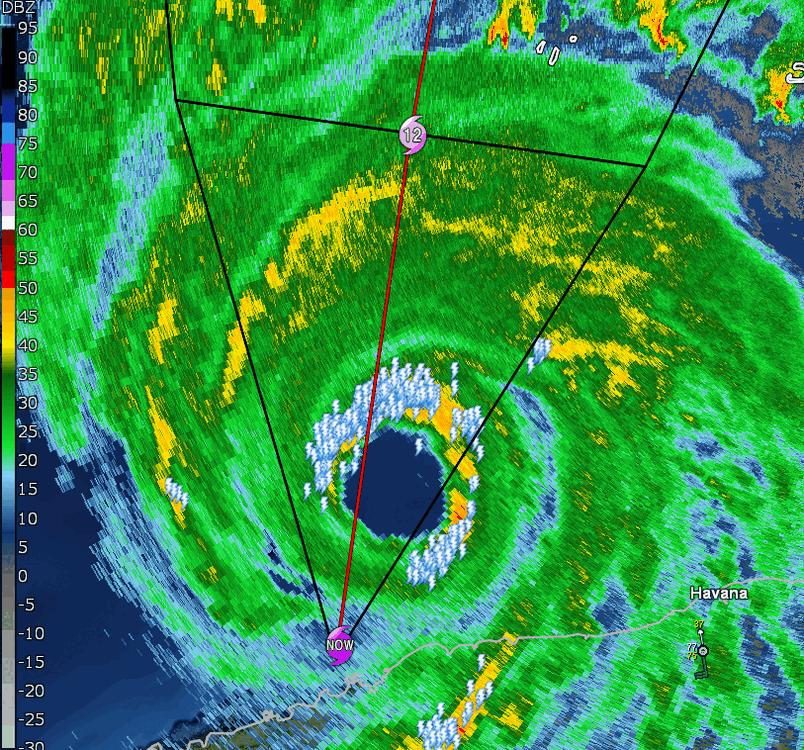

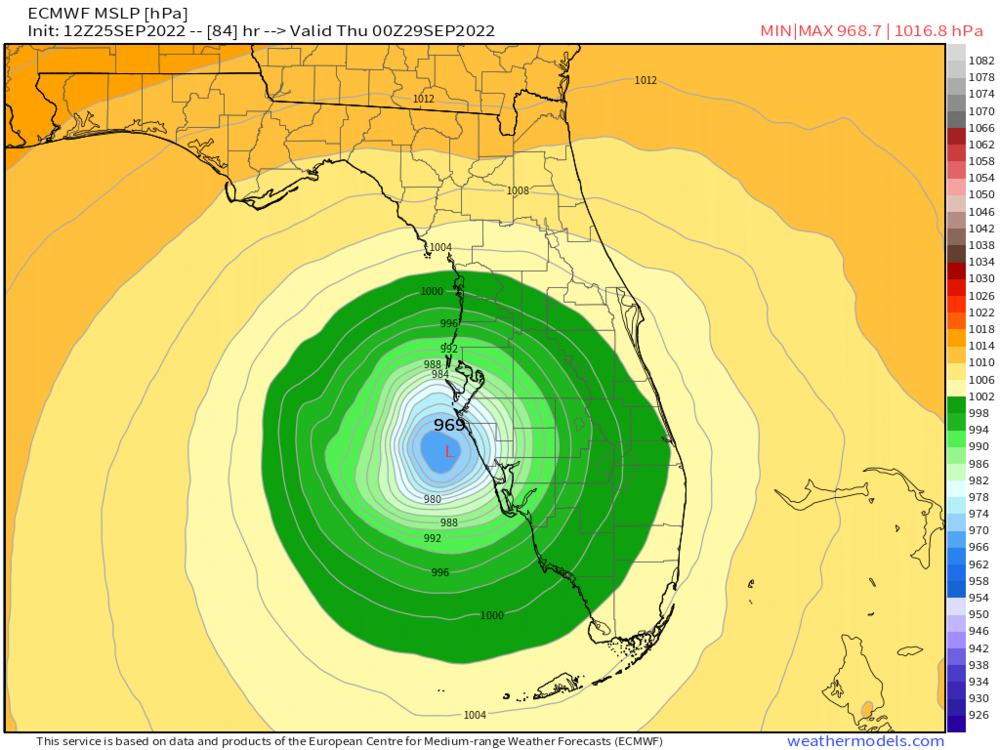
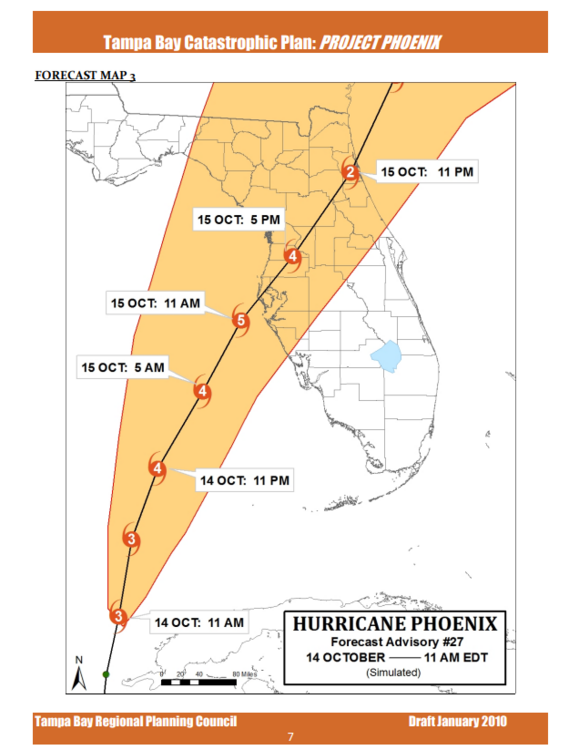
Hurricane Nicole
in Tropical Headquarters
Posted
Anyone else noticing the NAM is dropping 16" of rain on the Appalachians in NC.
Tropical Depression Fred dropped a similar amount just last August on the same area.